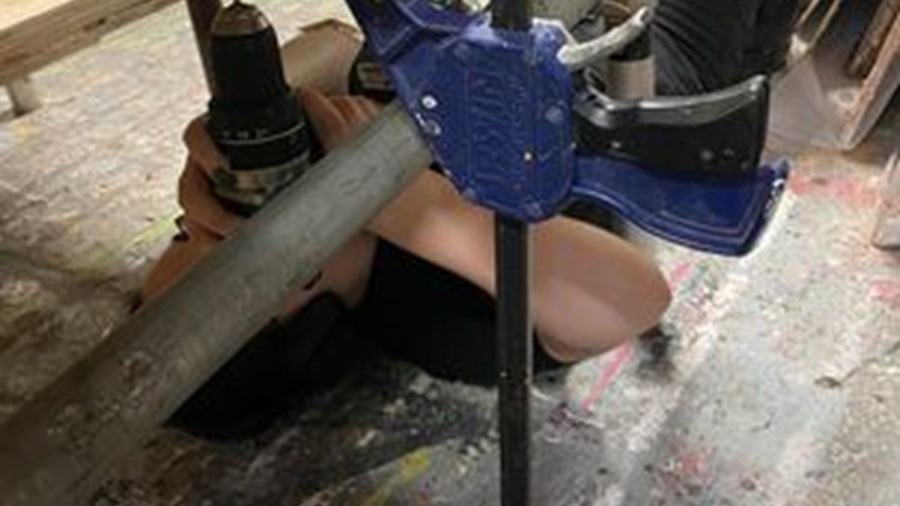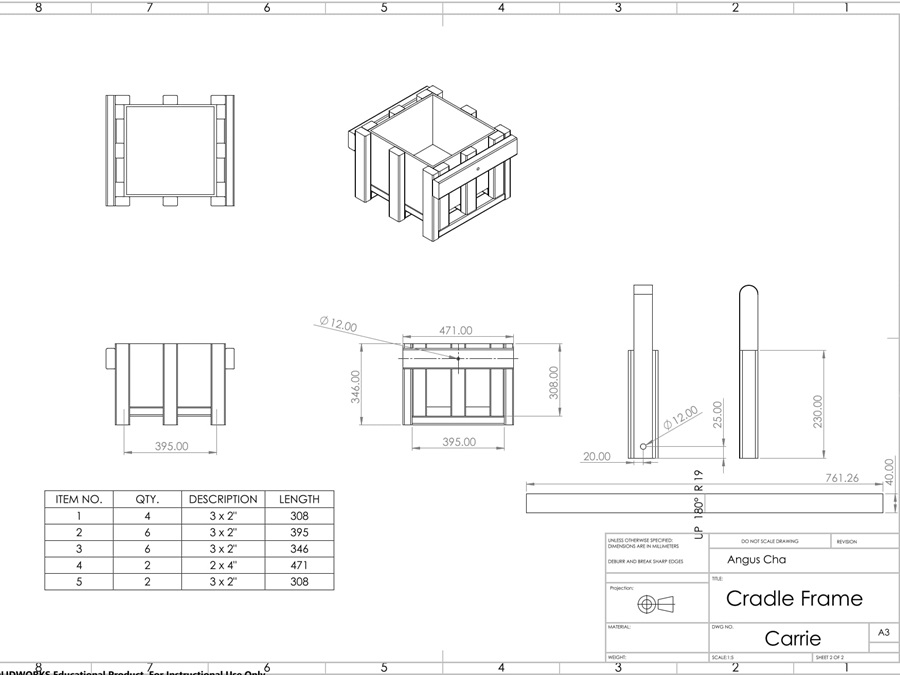We spoke to some of Carrie’s tech team to get an insight into the backstage preparation for the show. Featured below are interviews with Technical Director Emma Chandler, Sound Designer Stan Hunt, and Blood Engineer Angus Cha.
Carrie’s telekinesis is an integral part of the story; without spoiling the effect for any potential audience, can you give us a sneak peek into the tech behind making this happen on the ADC stage?
Emma: Our priority with the telekinesis was to find the simplest but most effective methods possible. The original Broadway production of Carrie is infamous as a technical disaster, and we knew we had to come up with elegant solutions which we were confident would work every night. The backstage of the theatre is huge, and the audience typically only gets to see a small part of it. We wanted to make use of all the hidden spaces, above, below and behind the cast on stage, leaving our audience wondering where the SFX operators are hidden around the set. With hidden wires, rods and some precisely programmed lighting cues, no telekinesis effect is done in exactly the same way across the whole show!
At the end of the show, the whole set has been destroyed; how have you technically and visually represented the destruction of the school?
Emma: Working with a student budget, we were never going to be able to completely destroy and rebuild the set each night, so we started from the director’s vision of Carrie as a kind of memory play which takes place in an already destroyed high school that can be slowly unveiled over the course of the show. Plasterboard is a notoriously flimsy and cheap building material, which made it perfect to use as a backbone to our set. We have plastered over dress netting, to create crumbling walls that don’t actually cover our stage with flakes or splinters. Second-hand furniture and cloths, leftover from other shows and having seen better days, have been repurposed to bring the rest of the set to life and help us hide all our special effects inside.

Carrie is a very supernatural show, filled with horror elements. How have you designed sound to contribute to this?
Stan: From the script itself, there is a lot of direction for sound design. As a sound designer, it’s great to have a lot of direction to where sounds should be, but not how the sound is meant to be done. In the script, all it says is ‘flick sound’ and the lovely director, Emma Lewis, gave me pretty much creative freedom over exactly what I should do with it. It was a lot of fun to make sounds basically from scratch for this show.
The Destruction, after the blood has been dropped on Carrie, is an impactful part of the production; what went into your thought process behind designing the sound for this?
First, I had to know what was happening onstage, so I got a detailed description from Emma of exactly how everyone died. When I was designing the sound for the destruction, I had already made a base telekinesis sound for the rest of the show. For the destruction, all I really did was make this much angrier, louder, distorted, and increased the bass, to make it clear that this was the point where Carrie was really letting loose.
The Carrie blood drop is a super iconic moment in the show; how have you gone about creating a mechanism to drop blood and get that iconic Carrie prom moment?
Angus: The inspiration behind this was waterfalls. Other productions do it with a smaller bucket of blood, but we wanted to recreate the movie aesthetic, which is when they filmed it in slow motion. Obviously in the theatre we couldn’t do it in slow motion, but we could do a thick viscous sheet of liquid falling onto stage. For this we would need large amounts of liquid, and therefore careful engineering was done to ensure that a box would be able to hold this quantity of liquid, supported by a hinge.

With this blood drop, a large quantity of liquid will need to be dropped onstage. What is the engineering behind draining this liquid off the stage to ensure it doesn’t cause any damage?
Angus: To ensure that it will not cover everything, we built a custom deck section that would allow us to hide 2 layers of sloped platform. A grate is built where we expect the blood to land, which will then fall into a bottom layer and then fall into a tub. We decided to go for this method over other options, as it seems the cheapest and would be the safest for actors to walk over and protect from any leaks.
What sets this production’s blood drop apart from other versions people may have seen?
Angus: Most productions typically use a small bucket, around 1L, which falls directly onto the actor. But we are trying to replicate a waterfall-like effect, and are intending to use approximately 4 gallons (15L) of liquid.
'Carrie: The Musical' runs at the ADC Theatre from 7 May to 11 May at 7:45pm.
Book your tickets here.
Join us on opening night for a pre-show party in the ADC Bar themed around Prom, with decorations and exclusive cocktails, starting from 7pm.


